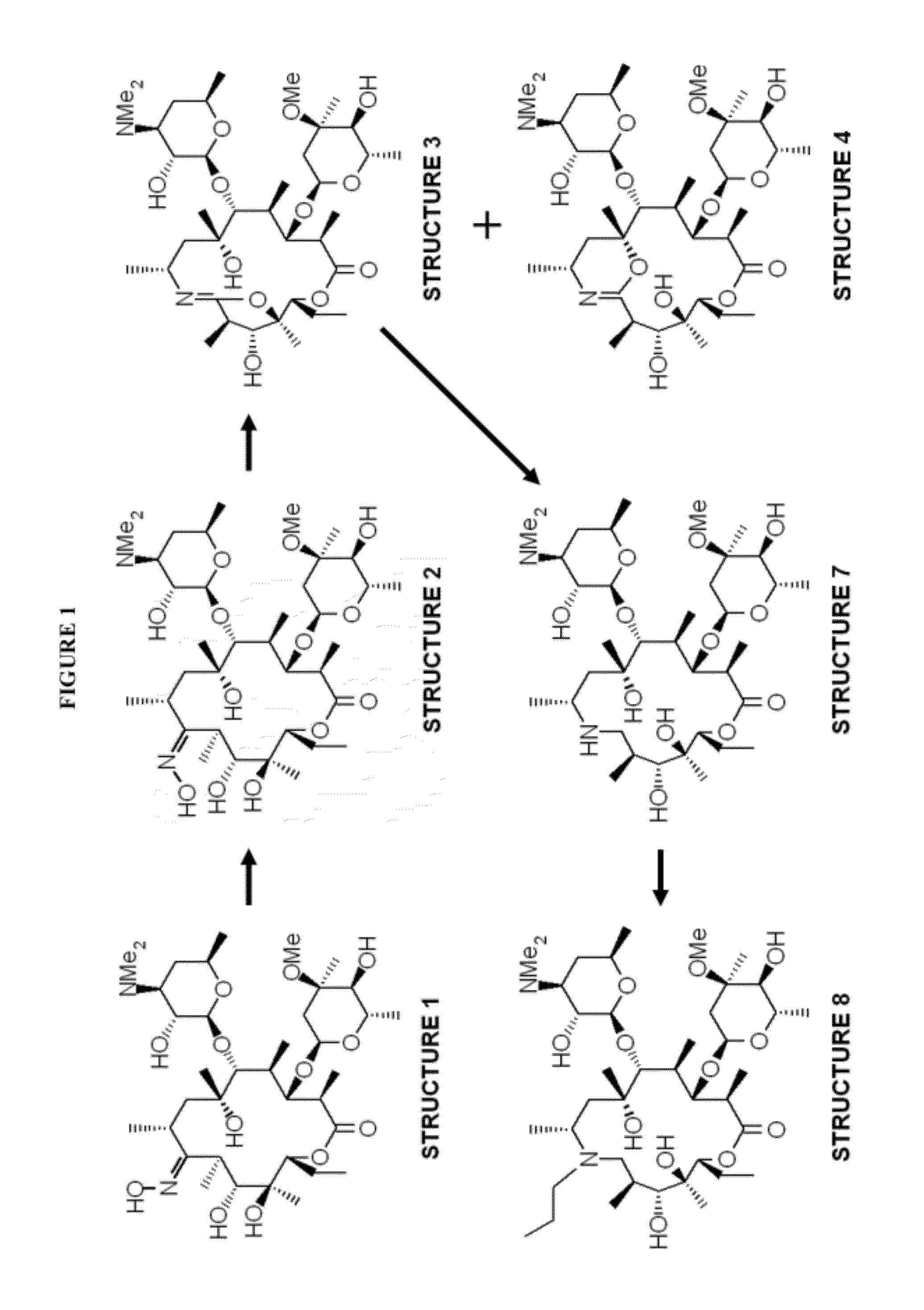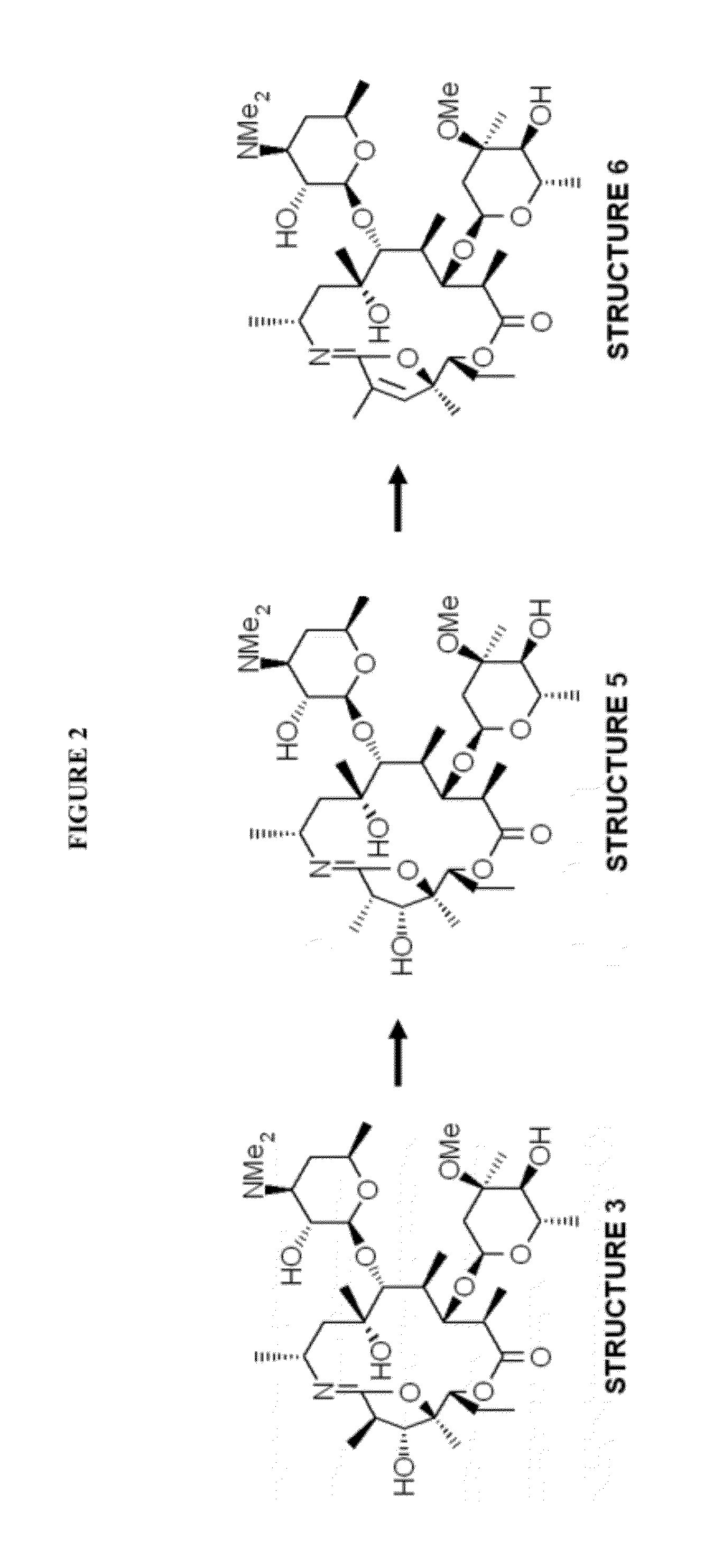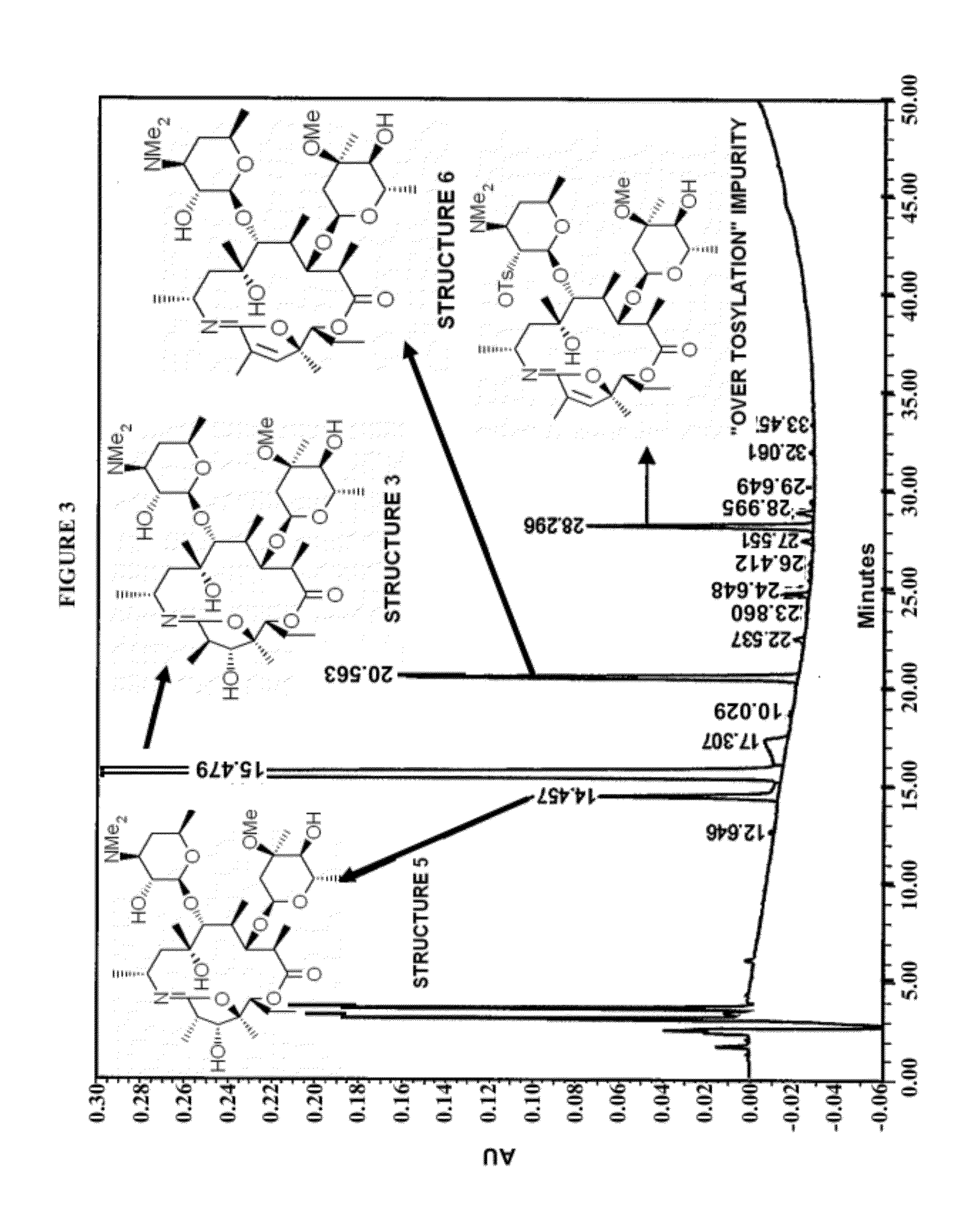Method of synthesizing macrolide compounds
a macrolide compound and compound technology, applied in the field of synthesizing macrolide compounds, to achieve the effect of reducing the cycle-time of the process
- Summary
- Abstract
- Description
- Claims
- Application Information
AI Technical Summary
Benefits of technology
Problems solved by technology
Method used
Image
Examples
example 1
Formation of Structure 3
[0077]A compound of Structure 2 (30 g) was mixed with pyridine (219.4 ml) and cooled to between 2° C. and 6° C. A solution of 4-toluenesulfonyl chloride (hereinafter “p-TsCl”) (16.5 g) in methyl t-butyl ether (64.4 ml) was added and the resulting solution was stirred for about 4 hours at between 2° C. and 6° C. and was then cooled to between −15° C. and −10° C.
[0078]Heptane (282 ml) was precooled to less than −10° C. and was added to the solution with stirring. After stirring, the phases were allowed to separate for at least 40 minutes. The upper phase (heptane phase) was removed and dichloromethane (403 ml) and water (503 ml) were added to the aqueous phase maintaining the temperature at between 0° C. and 5° C. The pH was adjusted to between 9 and 10 with sodium hydroxide solution and the mixture was stirred for at least 40 minutes at between 0° C. and 5° C. The aqueous phase was removed and backwashed twice with dichloromethane (60 ml). The combined organic...
example 2
Formation of Structure 7
[0079]A compound of Structure 3 (8 g) in DMA (80 ml) with catalyst Pt / C5% (4.0 g) was stirred at between 15° C. between 25° C. with a hydrogen pressure of 50 bar. Acetic acid addition (0.5 ml) was necessary to achieve reaction completion. Water (80 ml) was added to the suspension and the suspension was filtered through a cellulose bed. The filter cake was washed with water (80 ml) and to the resulting filtrate was added dichloromethane (160 ml) and the biphasic mixture was stirred for at least 1 hour. The organic phase was removed and dichloromethane (160 ml) was added to the aqueous phase prior to pH adjustment to between 9 and 11 with sodium hydroxide solution. The biphasic mixture was stirred and the separated organic phase containing Structure 7 was washed with water (160 ml). The obtained organic phase was dried with sodium sulfate and the dried solution was concentrated to the residue at a temperature below 50° C. under vacuum to afford an oil of Struct...
example 3
Formation of Structure 8 (Gamithromycin)
[0080]To the oily residue of Structure 7 (13.84 g) were added propanal (80 ml), Pd / C 3% (8.0 g) catalyst and acetic acid (7.5 ml). The suspension was stirred at a temperature between 40° C. and 45° C. with a hydrogen pressure of about 20 bar for at least 4 hours. Water (80 ml) was added to the suspension and the suspension was filtered through a cellulose bed. The filter cake was washed with water (80 ml) and to the resulting filtrate was added MTBE (160 ml) and the biphasic mixture was stirred for at least 30 minutes. The organic phase was removed and MTBE (160 ml) was added to the aqueous phase prior to pH adjustment to between 9 and 11 with sodium hydroxide solution. The biphasic mixture was stirred and the separated organic phase containing Structure 8 (Gamithromycin) was washed with water (160 ml). The obtained organic phase was dried with sodium sulfate and the dried solution was concentrated to the residue. Acetonitrile was added and th...
PUM
| Property | Measurement | Unit |
|---|---|---|
| temperature | aaaaa | aaaaa |
| temperature | aaaaa | aaaaa |
| temperature | aaaaa | aaaaa |
Abstract
Description
Claims
Application Information
 Login to View More
Login to View More - R&D
- Intellectual Property
- Life Sciences
- Materials
- Tech Scout
- Unparalleled Data Quality
- Higher Quality Content
- 60% Fewer Hallucinations
Browse by: Latest US Patents, China's latest patents, Technical Efficacy Thesaurus, Application Domain, Technology Topic, Popular Technical Reports.
© 2025 PatSnap. All rights reserved.Legal|Privacy policy|Modern Slavery Act Transparency Statement|Sitemap|About US| Contact US: help@patsnap.com



